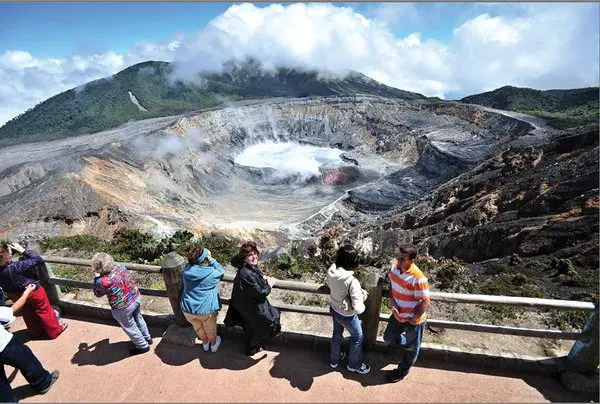With the stress and health problems that the Pandemic is causing around the world, Costa Rica aims to promote wellness activities that have been developing for years in the country, but which in the current context takes on special relevance and interest for tourists, both local and international.
The imposing Arenal volcano, its hot springs, the forests, and landscapes that surround it, form a mix so that wellness tourism becomes one of the bases with which Costa Rica wants to raise the tourism sector that has been hard hit by the COVID-19 Pandemic crisis.
With the stress and health problems that the Pandemic is causing around the world, Costa Rica aims to promote the wellness activity that has been developing for years, but which in the current context takes on special relevance and interest for tourists, both local and international.
Having income practically at zero in four months, the tourism companies of the small town of La Fortuna, in the northern part of Costa Rica, have begun to reactivate with the arrival of local tourists, and they hope that with the gradual opening of air borders, visitors internationals are also present.
The Arenal Volcano And Its Medicinal Hot Springs
For years the eruptions of the Arenal volcano were the main attraction of La Fortuna, but since 2010 the conical colossus has calmed down, so tourism entrepreneurs have given strength to other attractions such as forests, lakes, volcanic mud and mineral-rich hot springs.
Well-being is an awareness between body, mind, and spirit and invites us to live in the moment, to breathe, feel, and think. The natural spaces where nature invades us, move us, and make us feel that life is worth living and that we can overcome these situations that we are experiencing.

Thermal waters have components such as sulfates, magnesium and chloride, and analgesic, antioxidant properties and can help both the skin and improve heart rate, digestion and absorption of nutrients.
“Thermal waters tend to be hyper-mineralized. When you spend a good time in waters with these special values, you are allowing minerals, metals and other compounds to enter your body and possibly even eliminate any deficiency,” says the experts.
In wellness tourism, other activities are added such as walks on the nature trails, massages and skin treatments with volcanic mud, yoga and forest therapy. Certified guides explain that forest therapy originated in Japan and consists of people coming into contact with the forest in a relaxing environment, in which they use all their senses to experience a deep connection with nature.
It is a slow and relaxed walk through some natural environment in which we awaken our senses to find a unique, sensory connection with the forest, this activity provides benefits to the immune system, regulates pressure blood pressure, lowers stress and increases concentration.
A Reactivation In Progress With Sanitary Protocols
Tico tourism businessmen state that in August they have perceived a greater visitation of national tourists, mainly on weekends, who have decided to take advantage of the price offers and the gradual opening phases that the Government has established during the Pandemic.
On August 1st, Costa Rica opened its air borders for five weekly flights from Europe and Canada, and as of September 1st for about six weekly flights from the United States, but only for citizens of nine states of that country.
Costa Rica will prioritize tourism as a response to the Pandemic. “Costa Rica has an impressive wellness tourism offer and people are going out again, enjoying the environment, the forest and reconnecting with themselves. When you miss something for a while, it takes a different value,” said the manager of wellness tourism of the Costa Rican Tourism Institute, Melissa Tencio.
Hotels, tour operators and adventure parks in Costa Rica are applying strict sanitary protocols that include capacity limitations in their facilities, constant hand washing and disinfection, the use of a mask and other preventive measures.
Tourism is one of the main drivers of the Costa Rican economy, a country of five million inhabitants that before the Pandemic received some three million international tourists each year. About 500,000 people depend directly and indirectly on this activity in this Central American country, which is home to around 5% of the planet’s biodiversity.

